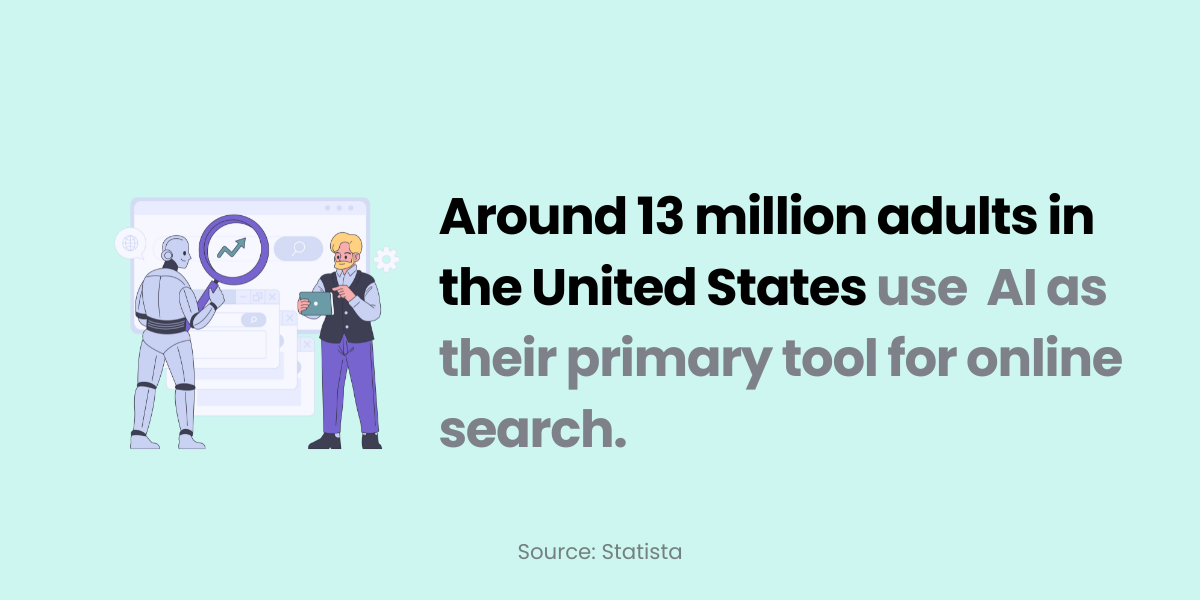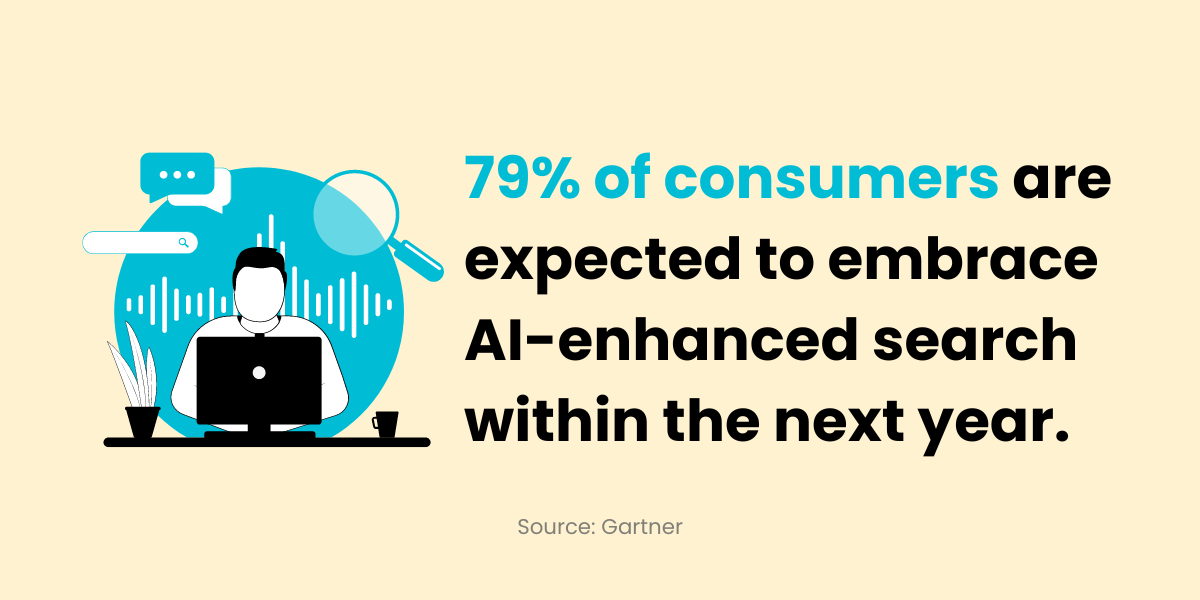The buzz surrounding artificial intelligence and its implications for the future is undeniable. Beyond the hype, a fundamental shift is happening in how we search and find information online. This is where Generative Search Optimization (GSO) comes in, a cutting-edge approach poised to redefine the digital landscape as we know it. It’s not just a minor tweak; it’s a whole new approach, changing how search works and demanding a fresh strategy. Those who adapt quickly to Generative Search Optimization will have a distinct advantage in the realm of digital marketing.

SEO vs. GSO: Navigating the New Frontier of Search
Traditional Search Engine Optimization (SEO) has long been the bedrock of online visibility. Optimizing content for traditional search engines involves focusing on keywords, backlinks, and technical aspects to climb those search engine rankings. However, the advent of AI-driven search engines like ChatGPT, Bing AI, and Google’s AI Overviews has ushered in a new era – one that necessitates a different approach known as Generative Search Optimization.
This doesn’t mean traditional SEO is dead. Instead, consider Generative Search Optimization as an evolution. Understanding the nuances of each approach will empower you to craft a robust digital strategy for organic search. It’s about understanding user intent, answering their questions directly, and ensuring your content isn’t just seen but becomes the go-to source for AI platforms.
Understanding How Generative AI is Changing the Game
Generative AI, which powers these new search engines, doesn’t simply retrieve a list of relevant links based on your keywords. Instead, these AI algorithms delve into a massive amount of data, comprehend context, and generate comprehensive, contextually relevant answers tailored to the user’s intent.
A McKinsey survey shows that generative AI adoption has skyrocketed, with 65% of organizations now using it regularly—almost double the figure from ten months ago. Google, recognizing this shift in search behavior, introduced AI Overviews in 2024. Initially a beta feature, it’s projected that billions of searches will yield AI-generated responses by the year’s end, demonstrating Google’s commitment to this new frontier. This signifies a dramatic shift that requires us to reconsider our content strategy, focusing on how we can align with the capabilities of these intelligent search systems.
This transition, although necessary, comes with significant implications for site content. It could potentially lead to a 30% drop in organic traffic if content isn’t optimized for both traditional search engines and AI-driven search.
Unpacking Generative Search Optimization
Generative Search Optimization isn’t about tricking the system with keyword stuffing. It’s about playing to the strengths of AI. It’s about understanding its preference for high-quality, contextually rich information that provides a generative experience for the user. Here’s a breakdown of what this approach entails:
- Focus on Answering Questions Directly: Generative search engines thrive on providing concise answers to user queries. Structure your content around addressing specific questions relevant to your target audience.
- Showcase E-E-A-T: Provide evidence-based answers by citing credible sources, research papers, and relevant statistics, like those discussed in this comprehensive research study on generative engines. Don’t shy away from technical terms, especially if your target audience values precise, authoritative information. Including quotes from industry leaders adds another layer of expertise and trustworthiness to your content. Consider incorporating multimedia, such as videos, infographics, and interactive elements.
- Ensure Content Clarity: Use headings, subheadings, bullet points, and concise paragraphs to make your content digestible for both humans and AI.
- Leverage Semantic Keywords: Use a variety of related keywords instead of overusing the same one repeatedly.
According to research, 79% of consumers are expected to embrace AI-enhanced search within the next year. Platforms like ChatGPT, now with over 180.5 million active monthly users, illustrate this burgeoning trend. So while Generative Search Optimization strategies are still evolving, this shift towards AI-driven answers necessitates incorporating it into your digital marketing strategy sooner rather than later.

Generative Search Optimization in Action: Real-World Strategies and Case Studies
Now let’s look at specific strategies that have proven successful, based on a real-world research study on Generative Engine Optimization.
1. Amplify Your Content’s Reach by Leveraging Authority
In one experiment using Perplexity.ai, optimizing a single website’s content noticeably impacted the platform’s standard responses. The results leaned favorably toward the optimized content, emphasizing how small adjustments can create a ripple effect. The study also highlighted that each AI search engine has its own algorithms. This emphasizes how critical it is to tailor your approach to match the unique characteristics and target audience of each platform. Remember, Generative Search Optimization is not one-size-fits-all.
This shift reinforces the idea of Generative Search Optimization being an evolution of SEO. We’re moving beyond basic keyword strategies toward building authority and authoritativeness, much like what E-E-A-T encourages.
2. Embrace Data-Driven Decisions: Back It Up with Research
Data-driven decision-making is crucial when diving into this relatively new domain. Consider a study that analyzed 10,000 search queries to evaluate the effectiveness of various Generative Search Optimization tactics:
GEO Tactics and Their Impact on Content Visibility
| Tactic | Description | Observed Impact |
|---|---|---|
| Keyword Enhancement | Integrate relevant keywords strategically, ensuring a natural flow to avoid keyword stuffing. | While useful, it didn’t show a significant impact compared to other methods in isolation. |
| Citing Sources | Provide hyperlinks to trustworthy websites that support your claims, increasing your site’s authoritativeness. | This simple adjustment improved visibility across different query types, underscoring AI’s appreciation for verified information. |
| Adding Statistics | Incorporate statistical data, figures, and percentages to reinforce arguments. | Particularly effective for finance-related queries, it showcases the value of data-driven answers in attracting AI attention. |
| Including Quotations | Utilize direct quotes from experts or authoritative figures, offering a unique perspective and bolstering content credibility. | Showed a significant increase in visibility, highlighting that directly sourced statements carry more weight. |
| Simplifying Language | Making content readily digestible through shorter sentences, simpler vocabulary, and easy-to-follow formatting. | Resulted in a slight decrease, emphasizing that while clarity is essential, it needs to be balanced with insightful, detailed information to resonate with AI’s analytical approach. |
| Fluency Optimization | Crafting grammatically sound and engaging prose that enhances readability. | Resulted in significant improvement, indicating the preference of AI algorithms for clear, concise language. |
| Using Unique Words | Incorporate unique terms and domain-specific vocabulary, avoiding excessive use of commonplace words. | Showed little impact, indicating a greater emphasis on informative value rather than lexical diversity in isolation. |
| Incorporating Technical Terms | Integrating relevant industry jargon or specialized language, signifying expertise in a specific field. | Particularly effective for science and technology topics, showcasing the need for content tailored to niche areas. |
| Authoritative Content | Embrace an authoritative tone, emphasizing expertise, experience, and a depth of knowledge on the subject matter. | Significantly impacted impressions, indicating that content conveying confidence and command over a topic tends to fare well with AI. |
This research reinforces that certain Generative Search Optimization strategies are more impactful than others. Although using simpler language can improve readability, it’s crucial to balance it with providing rich, in-depth content to showcase authority. Employing a strategic blend of these techniques can help ensure your content stands out.
Navigating the Future: Generative Search Optimization as a Cornerstone
The emergence of Generative Search Optimization underscores a crucial reality – the digital landscape is changing, driven by the remarkable advances in AI. This isn’t merely a passing trend; it represents a fundamental shift in how people will find and interact with online content. How people search using traditional search methods will change as more users turn towards platforms powered by AI to find answers.
But embracing Generative Search Optimization is more than a defensive strategy; it presents an incredible opportunity. Early adopters have a distinct edge, establishing themselves as authorities in their niche and attracting higher traffic. Imagine your brand being the leading voice that users find. That’s the power of Generative Search Optimization—turning this shift into a springboard for online success.
While further research will undoubtedly shape best practices in the coming years, one thing is clear: the era of Generative Search Optimization has begun. Content creators must have adaptability, ingenuity, and a user-centric approach to win in this new age of search.
FAQs About Generative Search Optimization
What is generative optimization?
Generative optimization focuses on adapting content to be better understood by AI-driven search engines. This might involve using clear language, structuring your content to directly answer potential queries, citing sources, and backing up claims with solid research.
How to optimize for generative search?
Start by thinking about user intent and answer specific questions clearly and concisely within your content. Cite trustworthy sources to back up your claims and include relevant statistics or data. Ensure readability by breaking up content with headings and bullet points. Using a conversational tone can help, but avoid fluffy or overly simplistic language, ensuring you still offer value.
What is the difference between SEO and GSO?
Traditional SEO targets search engines like Google, emphasizing keyword optimization, backlinking, and technical factors to improve content visibility. It often focuses on individual page ranking. Generative Search Optimization (GSO), aims to align with AI-driven search engines. While incorporating traditional SEO elements, GSO emphasizes detailed answers to user queries, drawing from various credible sources. Essentially, SEO focuses on attracting search engines, while GSO focuses on directly addressing user needs.
Is GSO replacing SEO?
Generative Search Optimization and traditional SEO are not mutually exclusive. While GSO might sound like the latest and greatest, it’s important to note that both SEO and GSO work in tandem to improve visibility. Think of Generative Search Optimization as an enhancement—a necessary adaptation in the evolving digital landscape.
Conclusion
As more people turn towards platforms powered by artificial intelligence to find answers and get things done, Generative Search Optimization will become less of a novel strategy and more of a necessity. Understanding the fundamentals of this evolution in search will undoubtedly provide businesses with an edge in a landscape that’s constantly shifting. Those who hesitate risk getting left behind, making embracing this new frontier not just smart, but essential.








